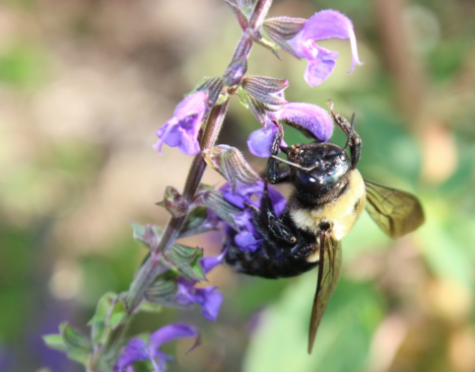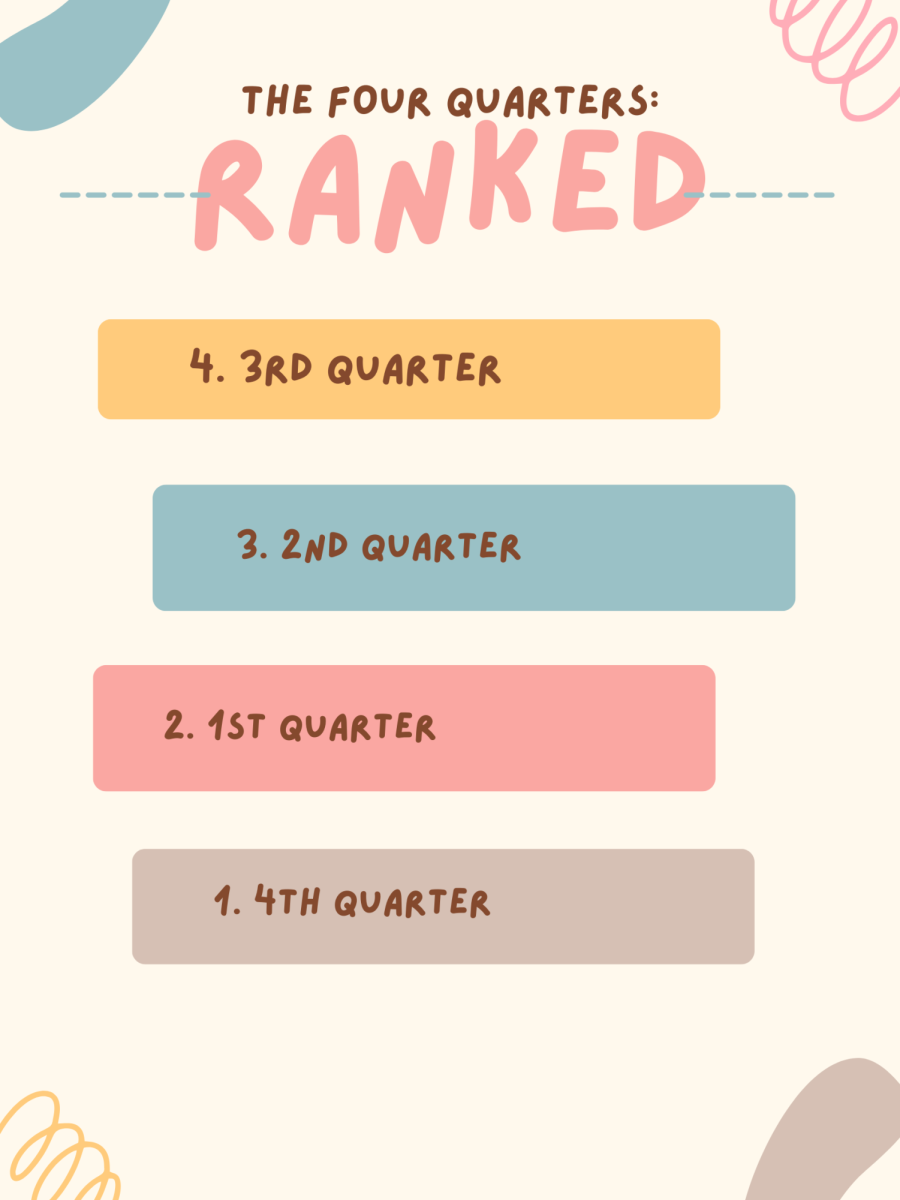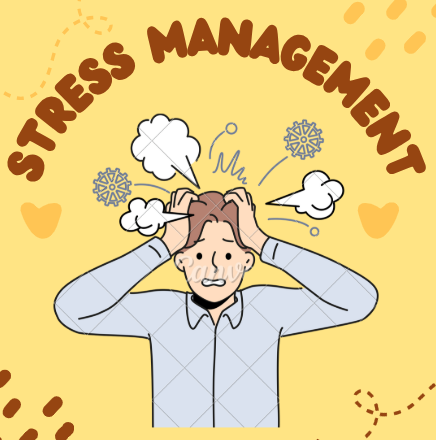By: Kyle Hilss
Although bees are tiny and at times pesky, they are vital to much of human activity and to life in general.
Bees are pollinators, meaning that they help plant life survive and reproduce by spreading their seeds and pollen. According to the National Resources Defense Council (NRDC) presentation called “Why We Need Bees,” about 30 percent of human crops and 90 percent of all wild plants rely on pollinators, like bees, to survive. This makes bees a type of keystone species, meaning that they have a disproportionately important role in an ecosystem relative to their size.
As important as they are, bees are not invincible. They are actually quite vulnerable. Unfortunately, bees are dying by the millions, and nobody seems to notice. This phenomenon is called Colony Collapse Disorder. This occurs when worker bees – the bees responsible for pollination and for caring for the hive – leave their hives and never return, and eventually die in the wilderness.
According to a recent study done by The National Institute of Food and Agriculture, beekeepers lost about 44.1 percent of their bee populations between April 2015 and March 2016. From that, 28.1 percent of the total losses occurred during the winter. Bees are expected to die off during the winter to some extent, though the total losses over the 2015 to 2016 winter were high. Another 28.1 percent of the total losses occurred during the summer, which is highly unnatural. Bees do not typically die off in large amounts during the summer, so this amount of summer loss is unexpected.
Scientists are not completely sure why bees are dying at such alarming rates. There are many theories to answer this question, and it is generally agreed upon that a combination of causes is responsible for the deaths of bees. Some of these explanations are quite basic: many scientists blame pesticides which kill bees (despite the fact that the pesticides are used on crops that rely on bees). Stress from travel that many domesticated hives experience, and loss of habitat are contributing factors to the decline of bee populations. However there are some more complicated explanations to the Colony Collapse Disorder in addition to these causes.
According to the NRDC webpage titled, “The Buzz About Colony Collapse Disorder,” a big and rather obvious cause of Colony Collapse Disorder is climate change. As worldwide climates get warmer, winter ends and weather gets warmer earlier in the year, meaning that flowers begin to bloom earlier in the year. This is a problem for bees because bees have evolved a hibernation schedule in which they go dormant during the winter months and emerge from their hibernation at roughly the same time every year. So by the time the bees wake up from their hibernation and leave the hive ready to pollinate, the flowers have already bloomed and died, leaving the bees with no pollen, no food, and no dignity.
Mites and parasites are also partly to blame, acording to an NRDC article titled “The Buzz About Colony Collapse Disorder,” because they weaken bees and make them more susceptible to pesticide poisoning. On the flip side, pesticide poisoning makes bees more susceptible to parasites and illnesses. It turns out humans are more responsible than we thought.
Another obscure explanation of Colony Collapse Disorder that is worthy of note is the rise of a parasitic fly called Apocephalus borealis that is known to terrorize bee populations. According to a scientific journal by Andrew Core and others titled, “A New Threat to Honey Bees, the Parasitic Phorid Fly Apocephalus Borealis” published Jan. 12 2012, this fly lays eggs inside of a bee host, and takes control of the bee’s behavior, effectively turning it into a zombee.
Bees that are infected with the parasite leave their hives at night which is dangerous for bees because of low nighttime temperatures. As a result, many bees infected with this parasite end up dying. This parasite is relatively new discovery and has already been detected in many states across America, including Virginia.
People are not as concerned with Colony Collapse Disorder as they should be. According to a cat track survey, only 40 percent of students are aware of the bee crisis and 60 percent are unaware. This is something that needs to be changed. People must realize the importance of the bees to our lives.
A world without bees would put a noticeable strain on our economy and on our diets. It is important for us to realize the vitality of the bee population to human functions of life.
If bees were to go extinct, crops that rely on bees to pollinate and reproduce would go on the decline. According to the Pollinator Partnership, food crops that would suffer without bees include most fruits, such as apples, citrus fruits, and watermelons, most vegetables including cucumbers, squash, and pumpkins, many types of nuts, vanilla, cocoa, coffee, and many more. Decorative flower crops would also suffer. Humans may need to resort to buying each other Bed Bath and Beyond gift cards for Valentine’s day instead of the usual chocolate and flowers.
In addition to the loss of crops, dairy and beef products would suffer heavy losses because many cows fed alfalfa, a crop which relies on bees. According to the Meat Institute, beef is the second most widely consumed meat in America, and it is doubtful that America’s beef-eaters would opt to trade in their Big Mac for a soy burger any time soon.
Although many food crops would suffer without bees, it is important to realize that, contrary to the more sensationalist claims made by some bee conservation activists, life on Earth would not totally collapse without bees.
Among the few crops that would survive the bee-pocalypse are corn, wheat, and rice. Most root vegetables like carrots, potatoes, onions, and radishes would also survive if bees went extinct, as well as some types of nuts and some types of grain. However, these foods only account for a small part of a healthy human diet.
According to “Consequences of Not Eating Fruits & Vegetables,” posted on Healthy Eating, humans can suffer from a slew of deficiencies and illnesses if they do not have the proper variety of fruits and vegetables in their diets. These include: vitamin C, vitamin K, and vitamin B deficiencies; iron, magnesium, potassium, and calcium deficiencies; unregulated cholesterol levels, elevated risk of cancer, elevated risk of obesity from reliance on carbs, and constipation. Simply put, a world without bees, and therefore without fruits and vegetables, sounds rather uncomfortable. It is a health pharmaceutical company’s dream.
In addition to lacking diets, the human population would suffer from economic strain if the bees were to go extinct. Thousands of Americans make a living beekeeping, and even more make a living farming, so the loss of bees means the loss of many, many jobs.
In addition, the markets of crops that rely heavily on bees could experience strain due to decreasing bee populations. The almond industry, one of the most important industries of California, is worth about 2.8 billion dollars a year, according to “Fact Sheet: The Economic Challenge Posed by Declining Pollinator Populations,” posted on the White House’s website. According to the Florida’s Citrus Mutual website, the Florida citrus crop is worth 1.35 billion dollars yearly. Citrus trees rely on bees for pollination. According to the American Sugar Cane League, the sugarcane industry of Louisiana is worth about 3 billion dollars a year. Sugarcane is a crop that relies on bees for pollination. These are just three of the many types of crops affected by the bee crisis. The decline in worldwide bee populations no doubt puts a strain on national and world economies.
Bees are vital for life as we know it. Most people do not realize it, but many aspects of our lives can somehow be connected to a reliance on bees. We need bees to eat, to have a stable economy, and many people need them to have jobs. Unfortunately, many people do not realize the magnitude of the bee crisis, or realize that there is a bee crisis at all.
It is not all terrible news, though. There are ways to help save the bees. You could plant a bee garden full of bee-friendly and aesthetically pleasing flowers and herbs which help bees flourish, you could start your own bee hive and take up beekeeping as a hobby, and you could avoid using pesticides on lawns and crops. Also consider supporting local bee hives and bee keepers by buying local bee products like honey or beeswax. You can also spread awareness of the bee crisis. The Honey Bee Conservancy is a useful tool if you are interested in taking steps to save the bees.
If you are a person who enjoys flowers, a decent economy, and eating food to survive, it is important for you to be aware of the bee crisis and to take steps to help support the bees. There is still time to save the bees from their ultimate demise. Bees are vital to human life and it is crucial that we use our intelligence to prevent the destruction of their populations. By contributing to factors that lead to the doom of the bees, we are only contributing to the doom of ourselves.

Local bee inspects a flower. Photo by Kyle Hilss.






